
Understanding The Email Analytics - Email Marketing Metrics And KPIs¶
When it comes to email marketing we all have a lot to say, discuss, and provide innovative methods to improve it. There are numerous blogs and articles that emphasize various ways to improve the strategies of email marketing. You might talk for days about the critical components that help in optimizing emails, avoiding email marketing mistakes and ideas to grow email marketing. But at the end of it does not matter how really optimized your emails are when no one bothers to open it. The efforts that you are putting forth to personalize the email are not getting the desired results. The measures you have taken are they helpful in hitting your goal.
So before you are sending out emails, you must ask yourself
- What is the main goal of email marketing?
- Is it to grow the subscribers?
- Is it to generate more leads?
- Is it to covert the leads into customers?
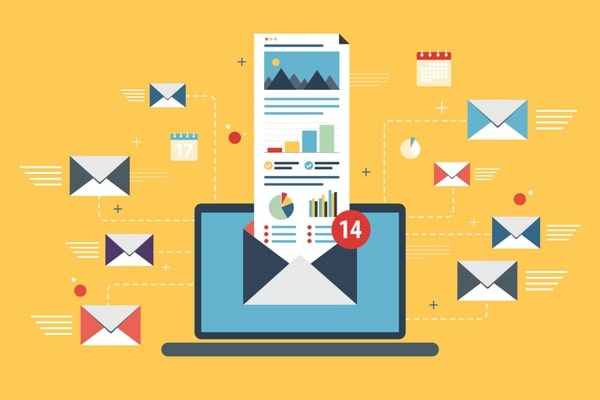
When you are clear with your goal, the next thing is to figure out what metric you would use to track your emails. The selected metrics must help you to determine how you are progressing towards your goal. Listed below are the email marketing metrics that you should be paying attention to. Every digital marketer or email marketer must track these metrics to ensure that you are on the right path.
- Clickthrough Rate
- Conversion Rate
- Bounce Rate
- List Growth Rate
- Email Sharing/Forwarding Rate
- Overall ROI
- Open Rate
- Unsubscribe Rate
1. Clickthrough Rate Insights:¶
What is CTR in terms of email marketing? It is the percentage of the email recipients who clicked one or more links provided inside the email
Calculation: (Total clicks OR unique clicks ÷ Number of delivered emails) * 100
For Example, 500 total clicks ÷ 10,000 delivered emails * 100 = 5% clickthrough rate
CTR is something every email marketer would ask you to track. It is also called as the day-to-day metric as it helps you to easily calculate the performance of each and every individual email you have sent. The daily tracking would help you to understand how your CTR changes over time.
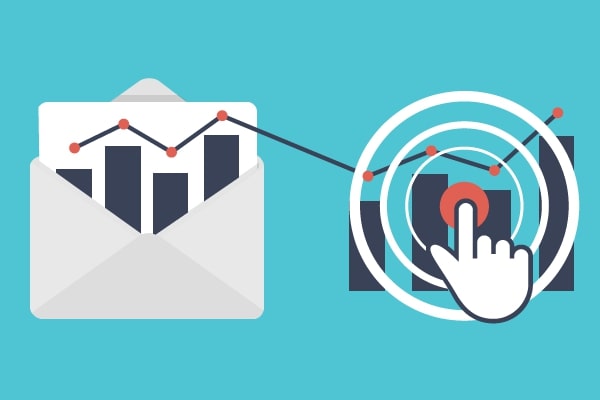
CTR can also be used to determine the results of the A/B testing. It is specifically designed in order to find new ways to get more and more number of clicks in the email. It is a very important metric that will provide direct insight on how many people on your list are actually engaging with the email content and are interested in learning more about it.
2. Conversion Rate Insights:¶
It shows the percentage of the email recipient who clicked on the link provided in the email and completed a desired action. The desired action can be filling out a form, purchasing a product, downloading an ebook etc.
Calculation: (Number of people who completed the desired action ÷ Number of total emails delivered) * 100
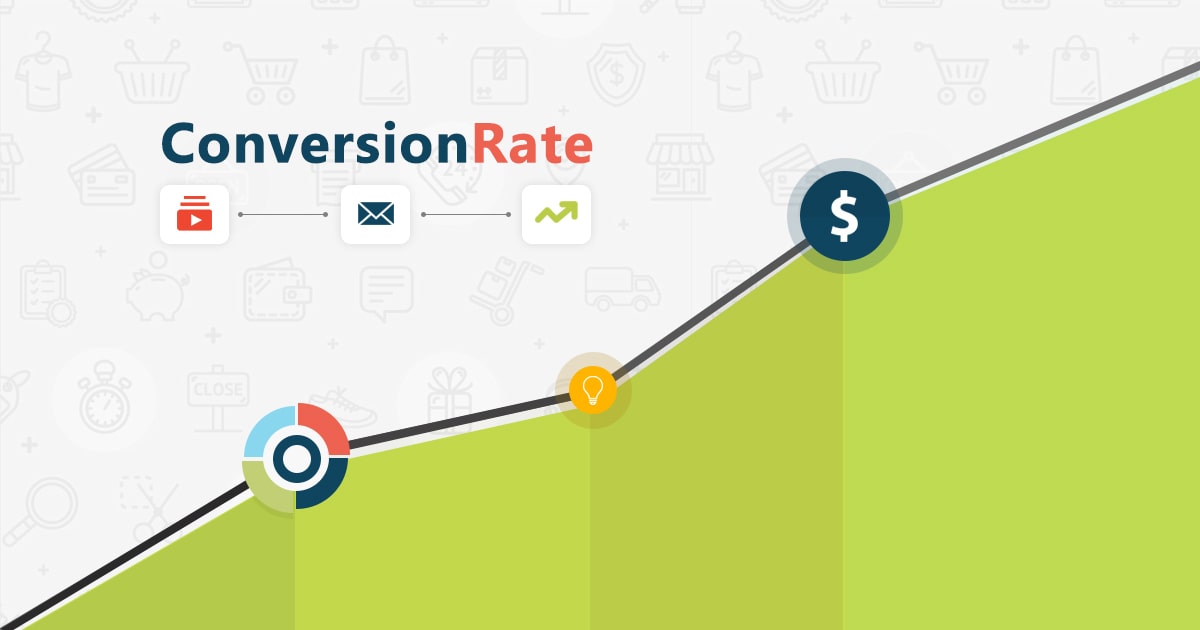
For Example: 400 people who completed the desired action ÷ 10,000 total email delivered * 100 = 4% conversion rate
As your first goal has been accomplished, the next one is to enable the potential visitor to covert through the offer. For instance, if you are asking the recipient of the email to download a free ebook. You need to consider actually how many downloads will occur and it will ultimately decide the conversion rates.
For successful conversion cycles, you need to focus on the effective call-to-action in your email. The call-to-action should be directly tied to the overall goals of email marketing. The conversion rate is a great indicator that would determine the extent to which you can achieve your goals. If you want to measure the conversion rate of your emails then there is a need to integrate your email platform with web analytics. You can work it out by creating unique tracking URLs for your email links. It will show the details to identify the source of clicks as coming from the specific email campaign.
3. Bounce Rate Insights:¶
It is the percentage of the total emails sent that are successfully delivered to the recipient’s inbox.
Calculation: (Total number of bounced emails ÷ Number of emails sent) * 100
For Example: 75 bounced emails ÷ 10,000 total emails sent * 100 = 0.75% bounce rate
In email marketing, there are 2 different types of bounce rates:
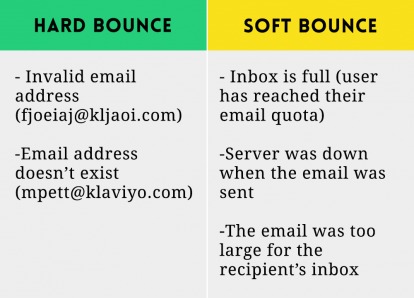
Hard Bounce Rate:
These bounce rate can happen due to invalid, closed or non-existent email address. These will not let the emails to be successfully delivered to the recipient. If such is the case then, immediately remove such email ids from your list
Soft Bounce Rate:
These happen due to temporary problems with a valid email address. The temporary problems can be - completely filled inbox, the problem with the recipient’s server.
Why Bounce Rate Calculation Is Important?
Although, the bounce rate will not directly impact your goal accomplishment. The bounce rate calculation will help you to understand that there are no deep issues with the emails and they do not look like spam.
4. List Growth Rate Insights:¶
The list growth rate will indicate the rate at which the email list is growing.
Calculation: List Growth Rate = ([(Number of new subscribers) minus (Number of unsubscribes + email/spam complaints)] ÷ Total number of email addresses on your list]) * 100
For Example: (500 new subscribers - 100 unsubscribes and email/spam complaints) ÷ 10,000 email addresses on the list * 100 = 4% list growth rate
Knowing about List Growth Rate will indicate to you the growth or loss of the email subscribers. You aim always should be to grow more and more subscribers in order to extend your reach, expand the audience and stand out from the crowd of competitors.
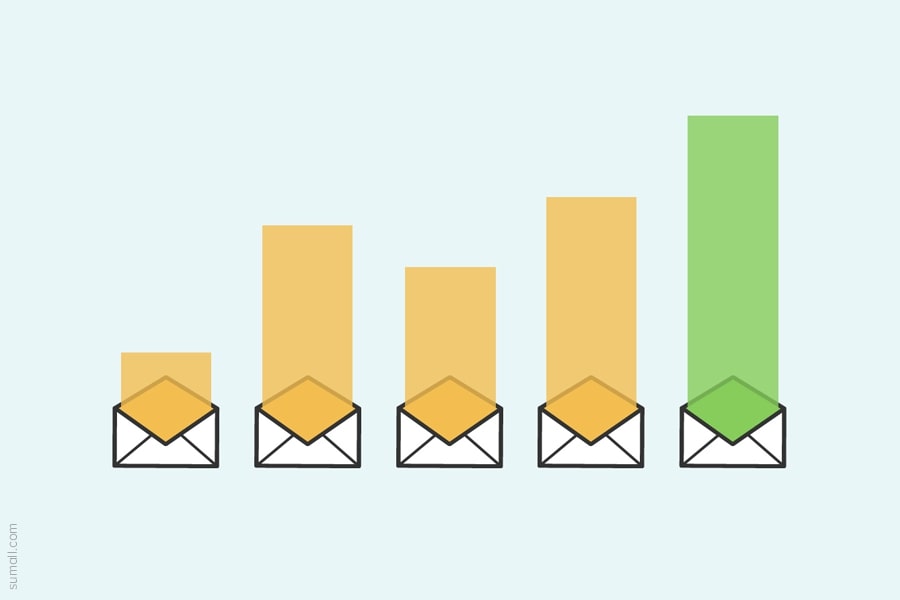
Why Is It Valuable:
You might not believe it, but there is a natural decay of your email marketing list. This expired every 22.7 to 22.9% each year. Now, this means that you will have to put in more effort to grow subscribers to keep the size healthy.
5. Rate Of Sharing & Forwarding Emails:¶
The sharing of email rate actually mean the percentage of the email recipients who clicked on the “Share This” button provided in your email content to any of the provided social networking. Similarly, you can also calculate the “Forward To Friend” button again available in the email post.
Calculation: (Number of clicks on a share and/or forward button ÷ Number of total delivered emails) * 100
For Example: 100 clicks on a share/forward button ÷ 10,000 total delivered emails * 100 = 1% email sharing/forwarding rate
This rate is considered to be quiet significant and it is one of the metric that you should be tracking. Now the question might arise as to why this rate needs to be tracked? Tracking the sharing/forwarding rate will indicate the number of new contacts. Through your emails you can encourage your readers to pass along your emails to other references they might find useful forwarding to. You will get to know how many new people you can add to the list.
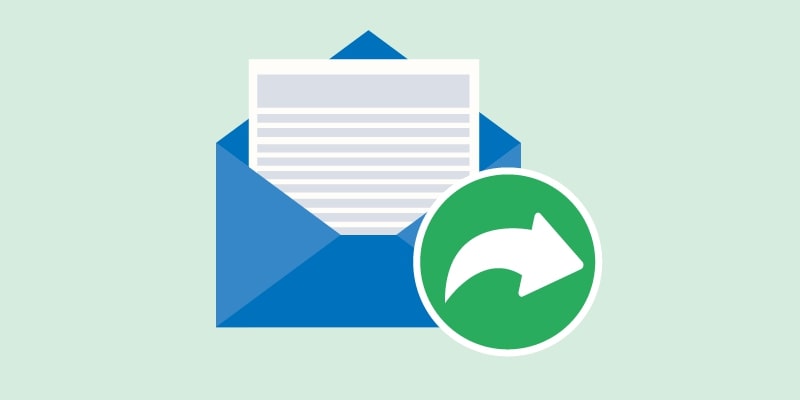
Why Is It Valuable?
The sharing/forwarding rate is required to discover what types of articles, offers, or content generally tends to get shared. This insight can also help you to plan your other email campaigns.
6. ROI Insights:¶
This will show that overall ROI - Return On investment for the email campaigns. It means the total revenue is divided by the total spend.
Calculation: [( \$ in additional sales made minus \\$ invested in the campaign) ÷ \$ invested in the campaign] * 100
In the calculation section you can see one of the common formulas of ROI calculation. But there can be different ways of approaching the ROI. This will depend on the type of your business. Just like other marketing ectors, you need to setup SLA system to assign different values to different leads that will generate revenue for the company.
Why Is It Valuable?
The overall ROI indicates the types of leads generated via email marketing. Along with this, you also gets to know about potential revenue, actual revenue generated through the entire campaign.
7. Open Rate¶
It is simply the percentage of email recipients who open a given email. The open rate of the emails can actually have a positive impact on the email marketing campaign and also benefit your website. It indicates that the emails are focused on optimizing CTR, and conversion rates.
"Quick Tip"
If some people use image blockers on the website then the images won’t be visible. Hence it is sometimes an inaccurate and unreliable metric.
CoderzColumn
Sometimes, the Open Rate might also be a misleading metric because it will just show that the emails were opened. But the fact remained unanswered whether the images, links, buttons were properly embedded or not.
Why is It Valuable?
Open Rate can be inaccurate and unreliable sometimes, but they are best when you are making some comparative analysis of the emails sent through the campaign. This might also give you the insight of the variables that need to be controlled in the email marketing campaign.
8. Unsubscribed Rate Insight:¶
It will show you the percentage of the email recipient who unsubscribed from the email list after opening the email. Again this metric will not show you the accurate picture. Sometimes people who are tired of getting the emails from your brand would stop opening it, reading it or clicking on it. So it is always better to rely on the subscribers engagement rate rather than unsubscribing rate.
 Dolly Solanki
Dolly Solanki
![]() Want to Share Your Views? Have Any Suggestions?
Want to Share Your Views? Have Any Suggestions?
If you want to
- provide some suggestions on topic
- share your views
- include some details in tutorial
- suggest some new topics on which we should create tutorials/blogs
Want to Get your Website on the First Page of Google SERP?
Reach out to CoderzColumn's digital marketer Dolly Solanki (dollyborade07@gmail.com). We can help you get a better ranking for your website.



 Want to Share Your Views? Have Any Suggestions?
Want to Share Your Views? Have Any Suggestions? email-analytics, digital-marketing
email-analytics, digital-marketing
